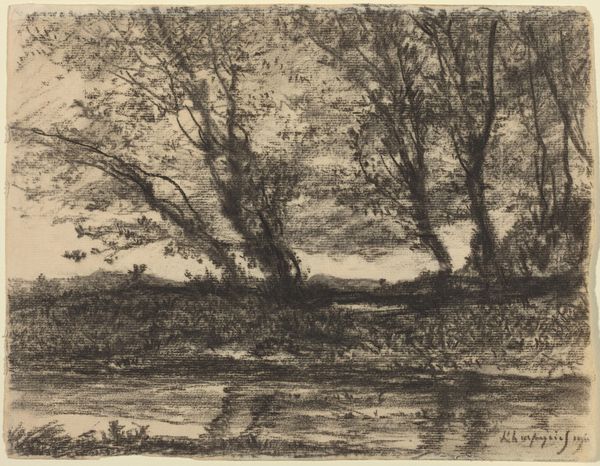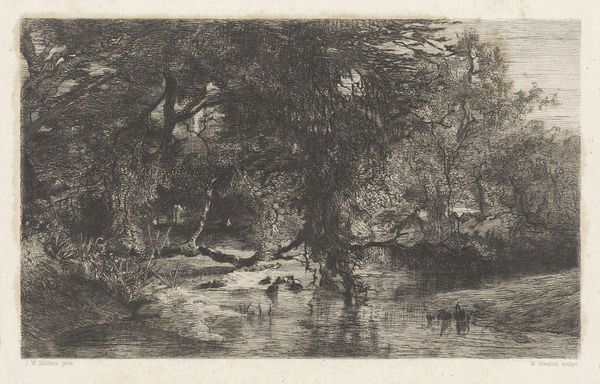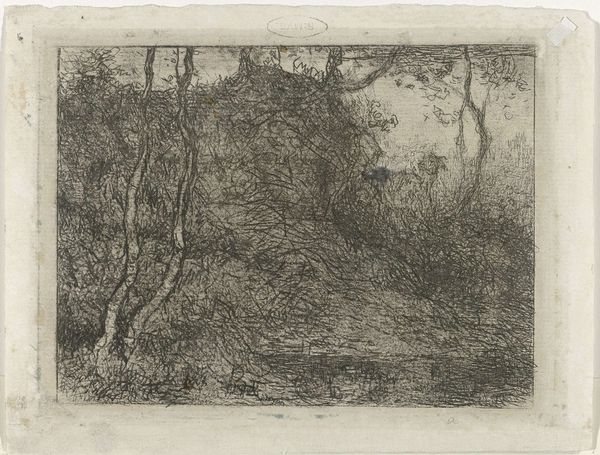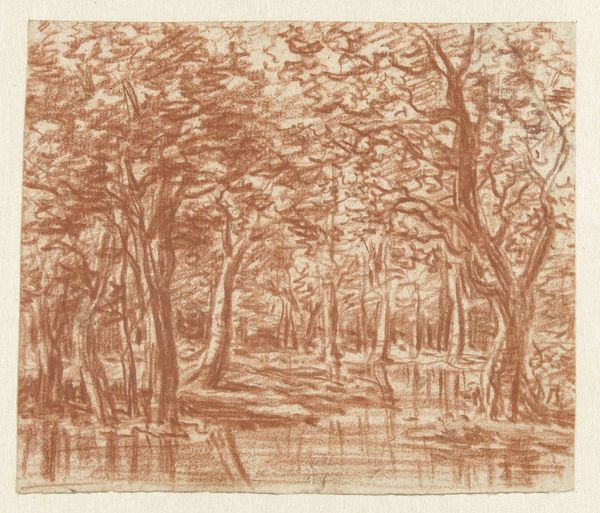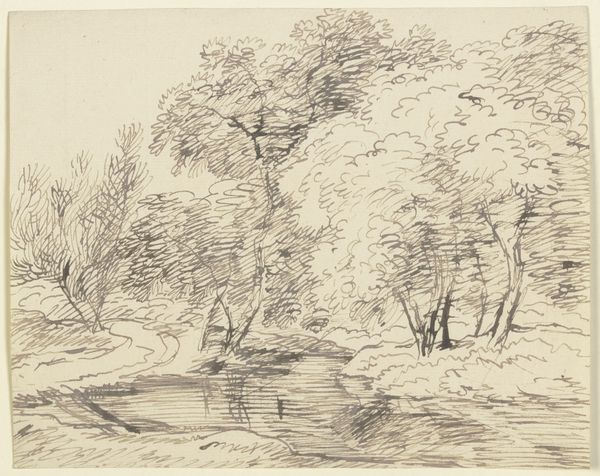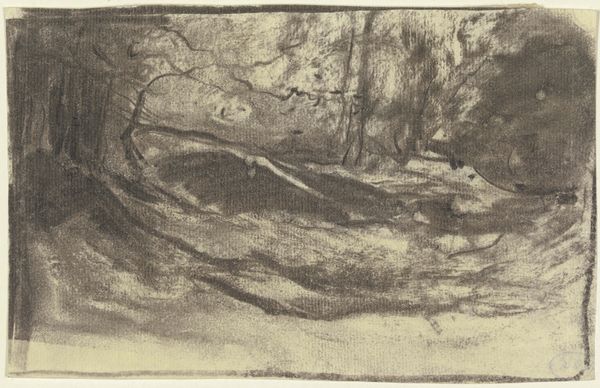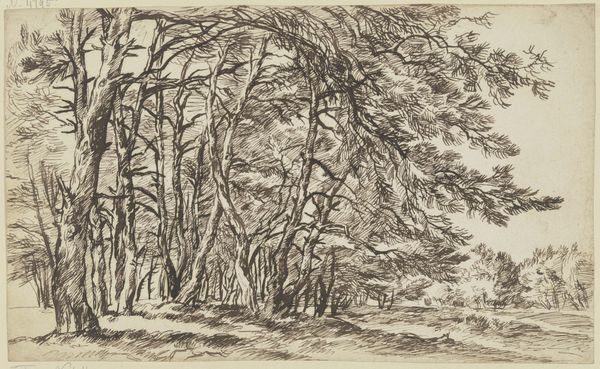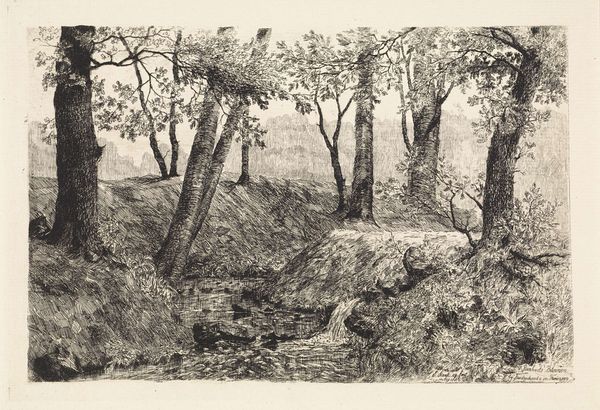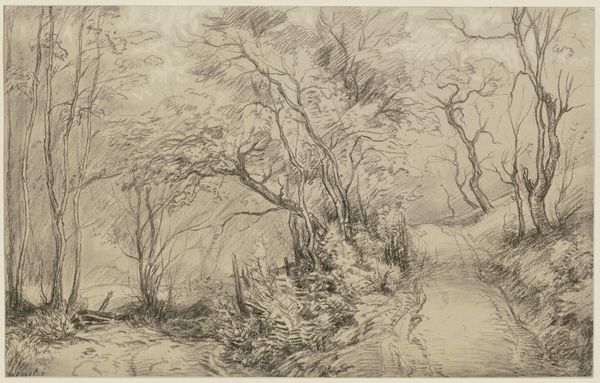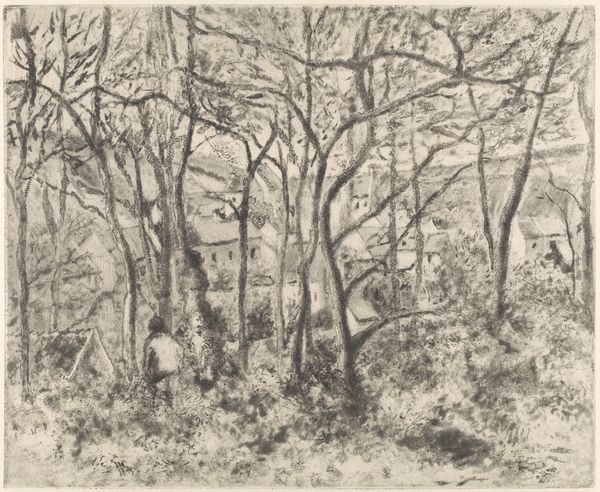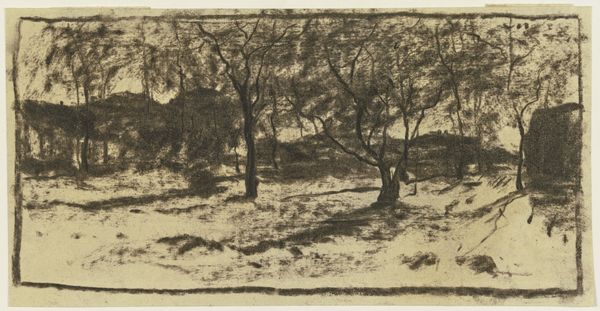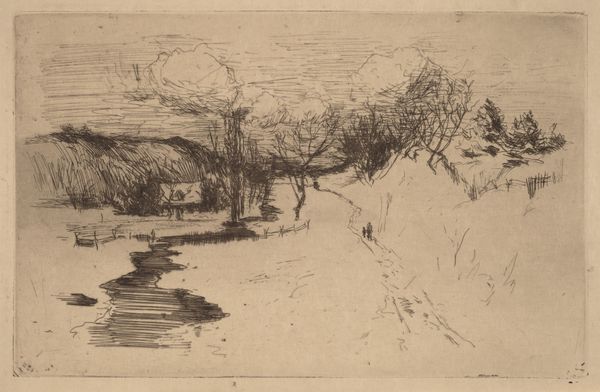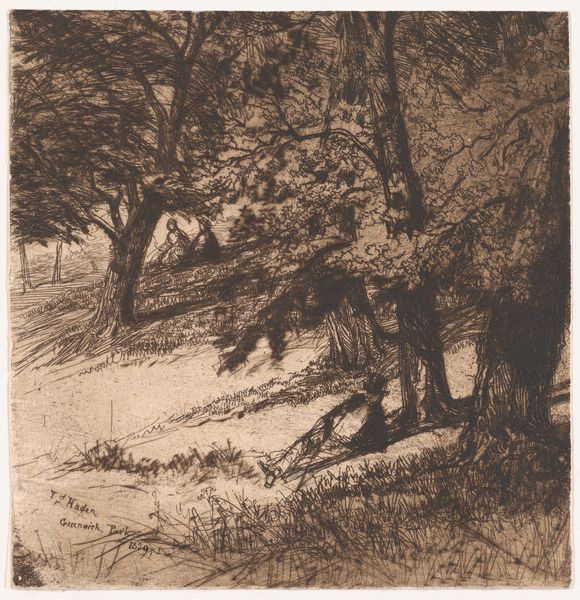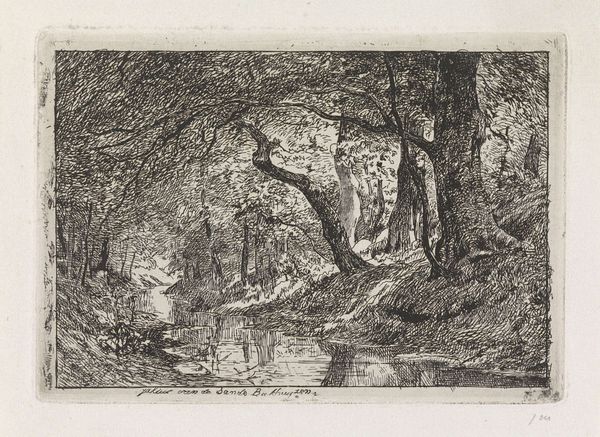
#
landscape illustration sketch
#
amateur sketch
#
light pencil work
#
pen sketch
#
pencil sketch
#
incomplete sketchy
#
forest
#
ink drawing experimentation
#
pen-ink sketch
#
watercolour illustration
#
watercolor
Dimensions: height 550 mm, width 737 mm
Copyright: Rijks Museum: Open Domain
Editor: This is Willem Bastiaan Tholen’s "De omgroeide vijver op Ewijkshoeve," dating from 1870 to 1931. It’s currently at the Rijksmuseum, and it appears to be made from pencil and watercolor. I am struck by how unfinished it looks – more of a study, maybe? What's your take on it? Curator: It is indeed interesting to consider this sketch through a materialist lens, viewing its apparent “unfinished” quality as less about aesthetic failing, and more about process. Given its likely status as a preliminary study, what does the material and its application reveal about the artist's methods of production, or the role of sketching in late 19th and early 20th century landscape art? Editor: That's interesting, I had assumed its unfinished quality meant it was unimportant. So you're suggesting that the act of sketching itself has value beyond the final, finished product? Curator: Precisely. We might ask, what kind of labor went into creating this? How does the artist’s hand, as revealed by the varying pressure and layering of pencil strokes, interact with and shape the depiction of nature? Further, consider the availability and cost of art materials during that period – how did that affect artistic choices? Editor: So, rather than focusing on what the sketch *represents*, you are more interested in *how* it was made and *why* certain materials were used. Does this approach shift the emphasis from the artist's individual genius to broader economic and social factors that impacted his art? Curator: Exactly! Thinking materially about art moves away from just praising artistic skill, towards examining the means and context of its production, highlighting the labor involved. This can include exploring its relation to craftsmanship and industry in the Dutch landscape painting tradition. Editor: I see. I hadn't thought about a sketch in terms of its production. It gives a whole different dimension to appreciating the artwork. Thanks for showing me this perspective! Curator: Indeed! By exploring the material conditions of artistic production, we deepen our appreciation of the artwork.
Comments
No comments
Be the first to comment and join the conversation on the ultimate creative platform.
